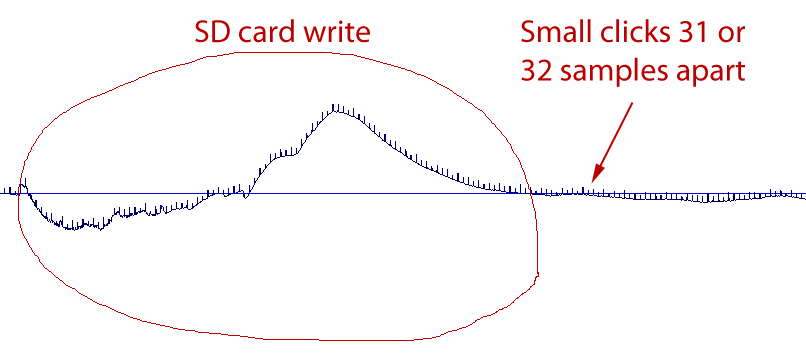Hello,
some time ago I was struggling with interfacing an I2S microphone with the nRF52832. That remained unsuccessful. My conclusion back then was that the selected I2S microphone and the nRF52832 were incompatible (the mic wanted 32-bit word size, which the nRF did not support).
In a current project, I -again- need to interface an I2S device to A/D convert the analog data from a MEMS microphone. This time a WM8731 codec, which is known to be very versatile and universally interfaceable. Since the WM8731 specification states that it supports different word lengths (16, 20, 24, or 32 bit), I was very positive that it can be used with the Nordic chip.
It seems I was wrong.
I took a small test board consisting of the WM8731 and the most necessary external components as recommended by the manufacturer and connected it with a Knowles analog MEMS microphone. This setup works flawlessly with a SAM4L development board.
With the Nordic nRF52 development board (PCA10040, v1.1.0) and the latest SDK (v13.0) the TWI communication (for setting up the codec) works and the codec also starts providing the samples over I2S, but I only see scrambled data in the Nordic's I2S buffers. I double and triple checked all my methods as well as the clock and codec configuration - they should work, but they don't.
I also played with different bitstream formats, which both sides (the codec and the nRF52) "speak". I made some recordings with a 1 kHz sine as input. Here are the results:
As for the recording, I write the data from an intermediate buffer to an SD-Card (based on the SD-Card example). This uses SPI (and EasyDMA). Some parts of the recordings sound like as if the SPI and the I2S transfers would disturb each other. I hope that is not true.
I also tried different MCL speeds (4, 8, 10.6, 16 MHz), different left-right-clock ratios (CONFIG.RATIO), bit-depths (CONFIG.SWIDTH), but nothing works right. If the recording sounds fine for 50 ms, then it gets totally distorted right after that (as if the sync between nRF52 and the codec would be gone).
Here is a simple question to the crowd out there: did anyone manage to interface any audio codec that works perfectly with the nRF52832?
If yes, please tell me which codec it was and what settings worked.
If not, I am tempted to believe that the I2S interface of the nRF52832 is buggy and hence useless.

